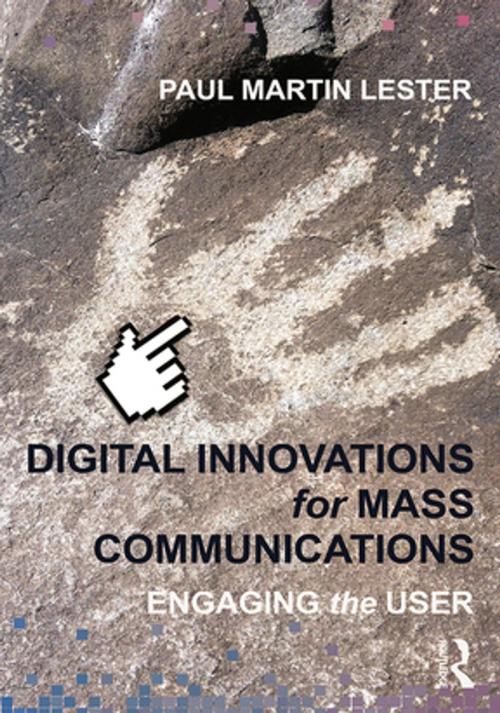Digital Innovations for Mass Communications
Engaging the User
Nonfiction, Reference & Language, Language Arts, Communication, Journalism, Social & Cultural Studies, Social Science| Author: | Paul Martin Lester | ISBN: | 9781135097035 |
| Publisher: | Taylor and Francis | Publication: | November 12, 2013 |
| Imprint: | Routledge | Language: | English |
| Author: | Paul Martin Lester |
| ISBN: | 9781135097035 |
| Publisher: | Taylor and Francis |
| Publication: | November 12, 2013 |
| Imprint: | Routledge |
| Language: | English |
In every field of mass communications—advertising, entertainment studies, journalism, public relations, radio-television-film, tourism, and visual reporting—professionals understand the importance of storytelling. Regardless of whether the finished product is a commercial, an in-depth investigative piece, a public service campaign, an independent documentary, a travelogue, or a collection of photographs, effective storytelling requires a combination of creativity, empathy, and expertise. Through the innovative technologies and techniques described in this textbook, students will learn how to turn passive readers and viewers into engaged and regular users.
The sixteen chapters each include a brief introduction, assignments, simple-to-follow step-by-step exercises, and sources for additional information in which users will learn to produce apps, informational graphics, quick response codes, quizzes, simulations, smartphone and table icons, social media campaigns, three-dimensional pictures, and video. Students will work with the following programs: Blogger, Dreamweaver, Excel, Facebook, GeoCommons, Google Maps, Illustrator, Imgur, iMovie, Infogram, iShowU, JavaScript, JustGive, Kaywa, Kickstarter, LinkedIn, Onvert, Photoshop, Pixel Resort, QuickTime, Reddit, Second Life, SurveyMonkey, TheAppBuilder, Twitter, Vizualize, Wikipedia, Word, WordPress, and YouTube.
When digital innovations are added to traditional print and screen presentations, a media user is not only allowed to interact with the information but can also physically engage with the story displayed. Giving students the tools they need to transform their storytelling in this manner is the ultimate goal of this textbook.
In every field of mass communications—advertising, entertainment studies, journalism, public relations, radio-television-film, tourism, and visual reporting—professionals understand the importance of storytelling. Regardless of whether the finished product is a commercial, an in-depth investigative piece, a public service campaign, an independent documentary, a travelogue, or a collection of photographs, effective storytelling requires a combination of creativity, empathy, and expertise. Through the innovative technologies and techniques described in this textbook, students will learn how to turn passive readers and viewers into engaged and regular users.
The sixteen chapters each include a brief introduction, assignments, simple-to-follow step-by-step exercises, and sources for additional information in which users will learn to produce apps, informational graphics, quick response codes, quizzes, simulations, smartphone and table icons, social media campaigns, three-dimensional pictures, and video. Students will work with the following programs: Blogger, Dreamweaver, Excel, Facebook, GeoCommons, Google Maps, Illustrator, Imgur, iMovie, Infogram, iShowU, JavaScript, JustGive, Kaywa, Kickstarter, LinkedIn, Onvert, Photoshop, Pixel Resort, QuickTime, Reddit, Second Life, SurveyMonkey, TheAppBuilder, Twitter, Vizualize, Wikipedia, Word, WordPress, and YouTube.
When digital innovations are added to traditional print and screen presentations, a media user is not only allowed to interact with the information but can also physically engage with the story displayed. Giving students the tools they need to transform their storytelling in this manner is the ultimate goal of this textbook.















